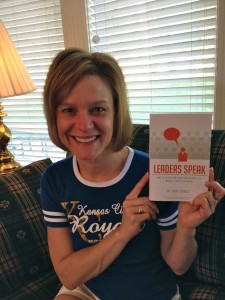Have you ever shaken hands with someone who had 1 of the following?
- the limp fish: you do all the work, their hand lies still in yours
- the vise grip: wants to show you how powerful they are & is willing to crush your hand to do so
- the finger tipper: only gives you their fingers to shake, little or no palm involvement
- the over-eager beaver: pumps your arm repeatedly, possibly won’t even let you get away
Like it or not, you can probably admit that the above handshakes tend to influence your first impression of the people using them, and not in a good way. This is why, when I teach the interviewee side of interviewing, I make sure to test a person’s ability to meet or greet their interviewer and if needed, help them improve it. So, do we have to wait to be heading to an interview? How early can we learn this?
My kids were with me last week for “Take Your Child to Work Day.” So, I tried to think of what I teach adults that they could also use as a young audience that would be good for them. It occurred to me that although generally friendly and not allowed to be rude, my kids do get a little shy and slightly awkward when they meet people, especially adults. So, I decided to teach them how to properly greet people at either 1st meeting or seeing them again later.
For adults and kids alike, the “why” this is important is the same. People get an immediate (and often lasting) impression of you from the way you reach out to or respond to them. The main pieces to practice are also the same. Please note: these are based on American culture, as some other cultures have different, even opposite customs and expectations.
1. Make eye contact – direct, not down or to the side, or past them, shows confidence and respect
2. Smile – one of the most universally (across most cultures and/or countries) positive Non Verbals, shows confidence and liking
3. Use a firm handshake – interlocking thumb webs, not weak, but not too strong, shows confidence and assertiveness
4. Articulate your words – clear, not mumbling or dropping off volume & always USE THEIR NAME, shows confidence and respect; “Hello Helen, it’s nice to meet you.” or “Hello Helen, it’s nice to see you again.”
Here are videos of my boys (4 seconds each) showing what they learned in their Take Your Child to Work Day lesson. It’s valuable at every age. If you aren’t doing all 4 of these things yourself, it could be hurting your credibility and therefore worth making certain you become accustomed to them!












